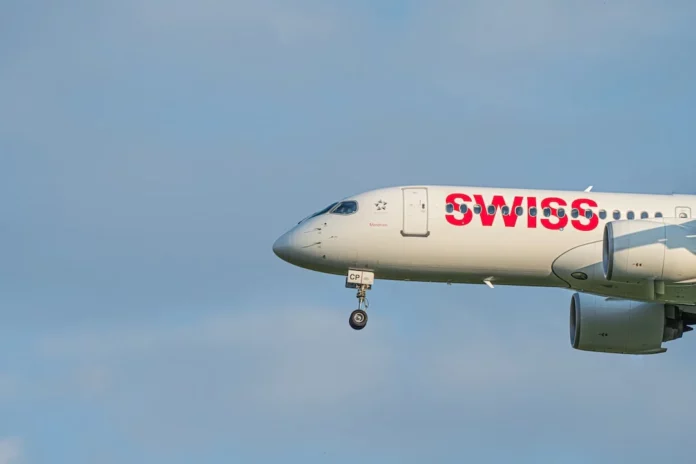The High Lift Control Unit (HLCU) is a critical component of the Boeing 737 aircraft’s high lift system. It plays a vital role in controlling and managing the movement of various devices, such as flaps and slats, which are essential for achieving the necessary lift during takeoff and landing. The HLCU ensures that these devices operate in a synchronized manner, providing the necessary lift and improving the overall performance and safety of the aircraft.
The HLCU is a sophisticated electro-mechanical system that utilizes hydraulic pressure and electrical signals to control the position and extension of the flaps and slats. It is designed to respond accurately and swiftly to the commands from the flight crew, allowing for precise adjustments of the high lift devices according to the changing flight conditions.
The HLCU incorporates various sensors and feedback mechanisms to ensure that the high lift devices operate in a safe and coordinated manner. These sensors monitor crucial parameters such as airspeed, altitude, and angle of attack, providing real-time data to the HLCU. Based on this information, the HLCU calculates the optimal positioning and extension of the flaps and slats, ensuring that the aircraft maintains the desired lift and stability during different phases of flight.
The HLCU is a highly reliable and redundant system, featuring multiple channels and backup systems to ensure continuous operation in the event of a failure. It is designed to meet the stringent safety requirements of the aviation industry, with rigorous testing and certification processes to ensure its reliability and performance.
How Does the High Lift Control Unit Work?
The High Lift Control Unit works in conjunction with the aircraft’s flight control system to achieve the desired lift during takeoff and landing. When the flight crew commands a change in the position or extension of the flaps and slats, the HLCU receives the signal and initiates the necessary movements. Hydraulic actuators connected to the HLCU extend and retract the flaps and slats, altering the wing’s shape and increasing its lift capabilities.
During takeoff, the HLCU coordinates the extension of the flaps and slats to increase the wing’s surface area, allowing for an efficient generation of lift. This enables the aircraft to achieve higher angles of attack and lower takeoff speeds, resulting in shorter takeoff distances. The HLCU continuously monitors the flight parameters to ensure that the flaps and slats remain in the optimal position throughout the takeoff phase.
During landing, the HLCU controls the position and extension of the flaps and slats to maximize the lift and enhance the aircraft’s maneuverability. By extending the flaps and slats, the HLCU increases the wing’s camber and surface area, allowing for a higher lift coefficient and slower approach speeds. This enables the aircraft to maintain a safe and stable flight path during the landing phase, even at lower airspeeds.
The HLCU also plays a crucial role in providing the pilot with visual and audible warnings in case of any anomalies or malfunctions in the high lift system. It continuously monitors the system’s performance and compares it to predetermined thresholds. If any discrepancies or abnormalities are detected, the HLCU activates warning indicators and alert systems, allowing the flight crew to take appropriate actions and ensure the safety of the aircraft and its occupants.
Importance of the High Lift Control Unit in Boeing 737
The High Lift Control Unit is of significant importance in the Boeing 737 aircraft due to its crucial role in achieving the required lift and enhancing the aircraft’s performance. Here are some key reasons why the HLCU is vital:
1. Enhanced Safety: The HLCU ensures that the high lift devices operate in a synchronized and controlled manner, providing the necessary lift and stability during critical phases of flight such as takeoff and landing. It incorporates redundant systems and backup mechanisms to guarantee continued operation in the event of a failure, enhancing the safety of the aircraft.
2. Improved Performance: By precisely controlling the position and extension of the flaps and slats, the HLCU optimizes the wing’s shape and lift characteristics, enabling the aircraft to achieve higher angles of attack, lower approach speeds, and shorter takeoff and landing distances. This enhances the overall performance and capabilities of the Boeing 737 aircraft.
3. Consistent and Reliable Operation: The HLCU is designed to operate accurately and swiftly in response to the flight crew’s commands. Its advanced sensors and feedback mechanisms ensure that the high lift devices respond appropriately to changing flight conditions, allowing for consistent and reliable performance throughout the aircraft’s lifespan.
Overall, the High Lift Control Unit is a critical component of the Boeing 737 aircraft’s high lift system, essential for achieving the necessary lift, stability, and performance during takeoff and landing. Its sophisticated design and precise control capabilities contribute to the aircraft’s overall safety, reliability, and operational efficiency.
For More: What is AUTO on Boeing 737? (Automatic)




